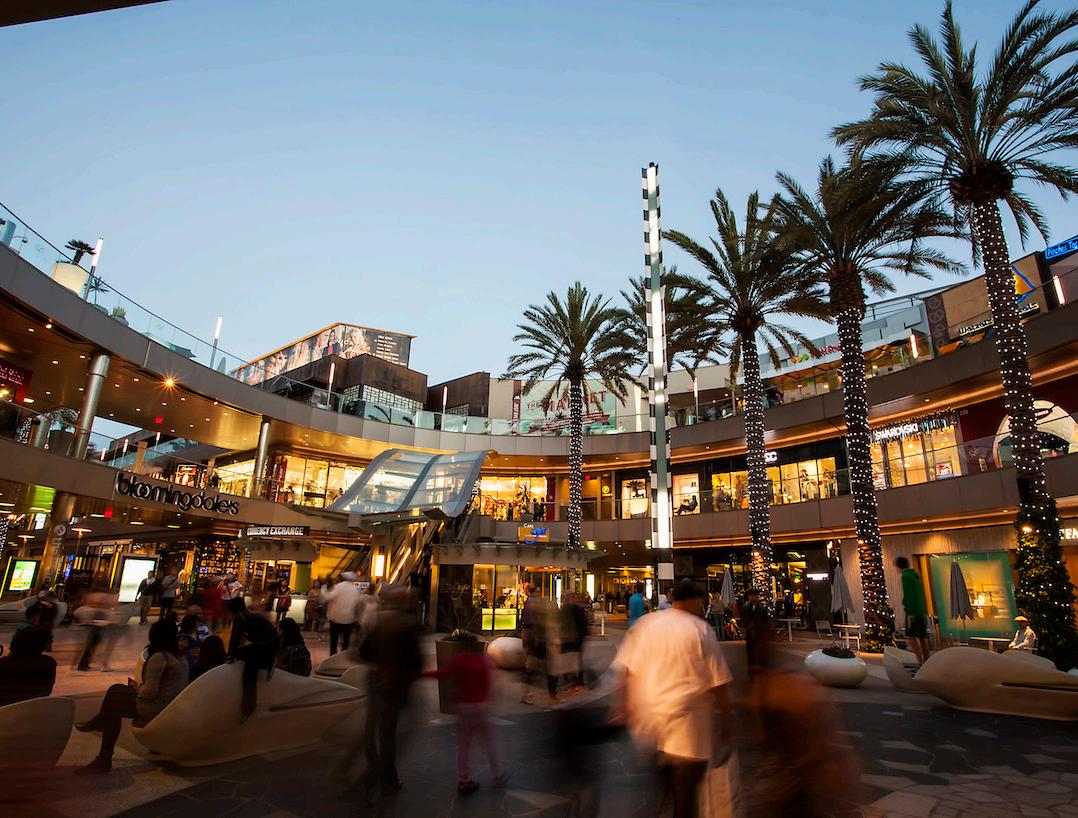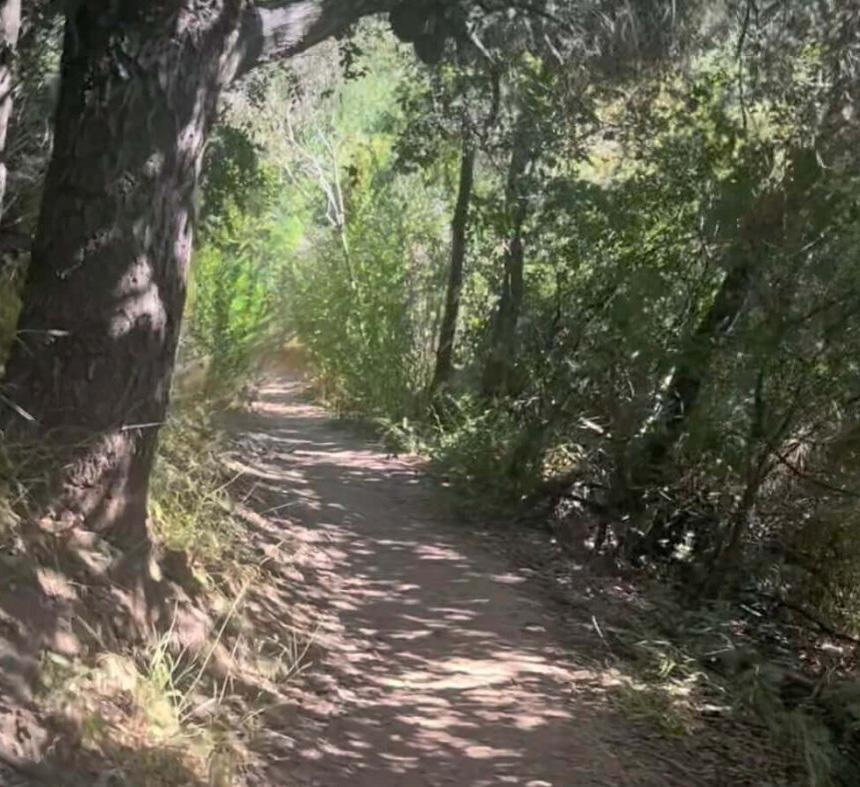
Three Teens Arrested in Santa Monica Armed Robbery




The statement came during a packed City Council meeting April 8, where dozens of residents— many holding signs reading “Save the Fairview Library”— filled the chambers
Santa Monica Councilmember Jesse Zwick on Monday walked back earlier comments suggesting possible consolidation of city library services, clarifying his support for the Fairview Branch Library after an outpouring of public support to keep it open.
The statement came during a packed City Council meeting April 8, where dozens of residents—many holding signs reading “Save the Fairview Library”—filled the chambers and rallied outside City Hall to protest the potential closure and sale of the Fairview Branch, which serves the Sunset
Park neighborhood.
“In an effort to leave no stone unturned, I made an offhand comment that some of our spaces in the library system were underutilized and might benefit from consolidation,” Zwick said during the meeting. “I want to say before everyone speaks that I was wrong.”
Zwick said he was moved by the volume of public engagement and acknowledged the unique role libraries play in the community.
“It’s far more common to hear from residents with other priorities and complaints,” he added. “It’s heartening for me to hear how many people care about this issue. I promise to not just preserve but enhance these spaces.”
The comments followed a community rally organized by the Friends of Sunset Park, the Santa Monica Public Library Board, and Friends of the Santa Monica Public Library. The April 8 rally called attention to budget-related concerns that could lead to the permanent closure of the Fairview Branch. The City Council could vote on the matter as soon as June 24.
The Fairview Library currently operates only two days per week on a self-service basis due to pandemic-era budget cuts. It previously welcomed about 80,000 visitors

annually, serving roughly 15,000 residents in Sunset Park.
During public comment, several longtime residents voiced their concerns.
“I’m a seventh-generation Santa Monica resident,” said a woman named Sharon. “I brought my children to Fairview before they could walk, and now I bring my grandchildren. We need a community library. I want you to think of the first time you walked into one.”
Another resident, Whitney, emphasized the library’s role in early childhood
education. “Children come on field trips. They walk there. They get books and learn that reading is a gift of knowledge,” she said.
Library Board Chair Judith Meister, who co-organized the rally, said the proposed closure would permanently impact the neighborhood’s social fabric.
“While we understand the city’s budget challenges, selling this vital community asset would have permanent consequences for our neighborhood,” Meister said in a statement prior to the meeting.
City officials announced Friday that the city of Santa Monica and organizers of the 2028 Olympic and Paralympic Games have officially ended discussions to host beach volleyball at Santa Monica State Beach.
After nearly two years of negotiations, the City of Santa Monica and the Los Angeles Organizing Committee for the 2028 Olympic and Paralympic Games (LA28) were unable to reach an agreement on key terms, including community benefits, operational logistics, and financial guarantees.
Santa Monica, widely recognized as the birthplace of modern beach volleyball, has been in talks about hosting the Games since Los Angeles submitted its first bid in 2016.
“There is no better place to host the Olympic beach volleyball competition
than Santa Monica, where the sport was born,” said Santa Monica Mayor Lana Negrete. “While we’re disappointed that an agreement was not realized, we remain eager to share the excitement the Olympics will bring to our region and are looking forward to being a regional partner in this historic event.”
LA28 formally notified the city that it intends to hold the beach volleyball competition at a different location.
City officials said discussions between Santa Monica and LA28 intensified in early 2023 and continued through the fall. During an October 2024 public study session, the Santa Monica City Council directed staff to negotiate stronger protections and clearer benefits for residents and businesses, especially those near the Santa Monica Pier. LA28 declined to revise its proposal to meet those conditions.
With venue negotiations concluded, Santa Monica will now focus on supporting the Games as a regional partner through various initiatives, including potential
hospitality houses, practice venues, broadcast centers, and watch parties under the city’s CELEBRATE28 program. The initiative is designed to coordinate efforts across departments and community partners in areas such as sustainability, transportation, special events, and hospitality.
“When the world shows up to Los Angeles for the 2028 Summer Olympics, we look forward to welcoming hundreds of thousands of participants and sports enthusiasts to Santa Monica for an iconic California experience,” said Misti Kerns, President and CEO of Santa Monica Travel & Tourism.
Local hotels, restaurants, and entertainment venues are already preparing for an expected surge in demand and are working to create new visitor experiences and packages for the 2028 summer season.
Despite stepping back as a venue city, Santa Monica remains committed to collaborating with LA28 and other regional agencies on transportation, media,

and hospitality coordination in advance of the Games, which begin on July 14, 2028. More information about LA28 is available at la28.org. To learn more about Santa Monica’s CELEBRATE28 initiative, visit santamonica.gov/topic-explainers/ celebrate28.
The firm plans to attract new retailers and restaurants in anticipation of the
Commercial real estate firm Prism Places has taken over management of Santa Monica Place, a high-profile but financially troubled mall near the Pacific Ocean, amid ongoing efforts to revive the retail center’s fortunes.
The 527,000-square-foot outdoor shopping complex is now under the operational control of Prism following its appointment by Trigild, the courtappointed receiver that assumed oversight last month after longtime owner Macerich defaulted on a $300 million loan tied to the property.
Santa Monica Place, originally designed by architect Frank Gehry and renovated in 2010 at a cost of $265 million, has suffered a dramatic 59% decline in value—from $622 million to $255 million—over the past several years. Retail vacancies and declining foot traffic have plagued the property, once seen as a cornerstone of the
city’s downtown shopping district.
Prism’s appointment comes as the Westside of Los Angeles continues to recover from a series of devastating fires and broader challenges facing Southern California’s commercial real estate market.
In a statement, Prism founder and CEO Stenn Parton said the company aims to restore Santa Monica Place as “the heart and soul of this community,” citing both the area’s resilience and recent policy changes as grounds for cautious optimism.
“Santa Monica has had its challenges even before the fires,” Parton said.
“The neighborhood of Pacific Palisades has endured so much loss—my home included.”
Though Parton pointed to Santa Monica’s continued desirability and affluence, the mall’s recent history paints a more complex picture. Once anchored by brands such as Bloomingdale’s and ArcLight Cinemas—both of which vacated a combined 150,000 square feet in 2021— the mall has struggled to retain tenants and shoppers. Pop-up events and shortterm activations have had limited success reversing the downward trend.
Prism, which manages other Southern California assets like RUNWAY Playa Vista and Pasadena Commons, brings a track record of repositioning distressed

properties. The firm says it plans to attract new retailers and restaurants in anticipation of increased regional visibility leading up to the 2028 Los Angeles Olympics.
Santa Monica Place remains adjacent to the popular Third Street Promenade, which has also been affected by shifting consumer
habits and commercial vacancies. Parton said his firm sees potential for synergy between the two districts.
“Santa Monica and Santa Monica Place will be on display as one of the most dynamic destinations in the world,” he said.






















The January 2025 wildfires that devastated Pacific Palisades and Altadena left an indelible mark on Los Angeles County. Beyond the immediate human tragedy lies a critical juncture for community planning and policy development. As climate scientists project increasing wildfire intensity and frequency in coming decades, the rebuilding process represents a rare opportunity to implement forward-thinking approaches that enhance community resilience against future disasters.
California has long been at the forefront of wildfire preparedness with its specialized building codes. The state’s “Chapter 7A” requirements, which mandate fire-resistant construction in designated high-risk zones, represent some of the most progressive wildfire building standards in the nation. These codes evolved from decades of post-fire analysis, with each major wildfire providing lessons that informed subsequent policy revisions. The effectiveness of these building standards is well-documented. Research shows that homes properly built to California’s wildfire codes are 40% more likely to survive wildfire conditions. A comprehensive FEMA analysis projected that implementing these standards could save $24 billion in damages to singlefamily homes over a 75-year period—a return on investment that far exceeds the incremental construction costs. However, these protective standards have historically applied only to state-designated wildfire hazard zones, creating an uneven patchwork of protection. In Pacific Palisades, which was already mapped as a high-risk area, all rebuilding must follow these stringent guidelines. Meanwhile, in Altadena, thousands of destroyed homes fell outside the designated zones, allowing reconstruction without fire-resistant requirements—despite the area’s obvious vulnerability demonstrated by the recent fires.
Recognizing the growing wildfire threat, California fire officials recently released updated wildfire hazard maps that significantly expand the areas where fire-resistant building codes apply. These new maps add 1.4 million acres statewide to high or very high-risk designations, including more than 500 additional buildings in the Eaton Fire footprint that affected Altadena. Los Angeles County must adopt these new zones by July 2025, giving affected property owners only three months before the more stringent rules
take effect. This represents an uncommon example of strengthening—rather than loosening—building requirements after a disaster. Typically, governments face immense pressure to expedite rebuilding by relaxing regulations, often recreating the same vulnerabilities that contributed to the disaster. Despite these expansions, significant protection gaps remain. Even with the updated maps, more than 7,800 buildings in the Eaton Fire zone won’t be subject to wildfire-resistant building codes. This disconnect exists because California’s mapping methodology focuses on fires spreading from wildland areas and doesn’t adequately account for house-to-house fire spread in urban settings—a phenomenon that contributed significantly to destruction in both Pacific Palisades and Altadena. While building codes address individual structures, true community resilience requires broader planning approaches. Los Angeles County officials are exploring several community-scale strategies to enhance wildfire protection beyond building requirements. One main way to creating defensible space is the use of strategic landscaping around buildings that reduces fire intensity and slows spread. This represents a critical complement to fire-resistant construction. Communities are developing neighborhood-wide defensible space plans that coordinate individual property efforts into cohesive protection zones, recognizing that wildfire resilience transcends property lines. Another community-level intervention offered are undergrounding utility lines. Overhead power lines have ignited numerous California wildfires during high winds and are still being investigated as a potential cause of the Eaton Fire. Though expensive, placing these lines underground eliminates a major ignition source while enhancing community aesthetics. Several Pacific Palisades neighborhoods are exploring special assessment districts to fund undergrounding projects as part of their rebuilding efforts. These groups are hopeful that ConEdison will encourage the funding. Also included is improving evacuation infrastructure—widening roads, creating multiple egress routes, and implementing advanced notification systems—further enhances community safety. Narrow roads in hillside communities like Pacific Palisades can create dangerous bottlenecks during evacuations, a vulnerability that comprehensive rebuilding plans can address.
Lastly, LA City Council recently passed significant new funding for the Los Angeles Fire Department to be used on not only new hires and equipment but also infrastructure improvements for water lines to hydrants. The replacement

of outdated hydrants is long overdue with new hydrants, which can handle higher water pressures from underground lines, and better accommodate LAFD tanker trucks.
Alternately, Los Angeles County is facing the difficult challenge of addressing both a severe statewide housing shortage and increasing wildfire risks. The county recently limited new housing development in the Altadena foothills where wildfire risk is highest, instead directing growth toward denser urban corridors with better access to public transit. This approach reflects an emerging consensus among planners that concentrated development in lower-risk areas offers both environmental and safety benefits. Denser communities typically have smaller carbon footprints while providing more efficient emergency services coverage. However, these policies raise complex questions about homeowner property rights, affordable housing availability, and environmental justice that communities must begin to thoroughly address through inclusive planning processes.
There are various policy tools to help communities navigate the financial challenges of fire-resistant rebuilding. Los Angeles County officials are exploring grant opportunities to help homeowners afford the added cost of requiring fireresistant construction, particularly for those who are underinsured. These programs may provide particular support for lowerincome residents who might otherwise be displaced by increased rebuilding costs. Expedited permitting for projects that exceed minimum fire-safety requirements represents another policy lever. The Los Angeles Department of Building and Safety is developing a fast-track permitting process for homeowners who choose to rebuild with sustainable, fire-resistant systems—incentivizing better practices through reduced administrative burdens.
Another crucial role requires Insurance innovations. Some insurance companies now offer premium discounts for homes built to enhanced wildfire-resistant standards, creating financial incentives that help offset higher construction costs. Public-private partnerships between government agencies and insurers show promise for expanding these programs to reach more homeowners.
Perhaps the most important element of rebuilding resilient communities is meaningful engagement with residents throughout the planning process. The Resilient Rebuild Advisory Committee, established by local official,s brings together community representatives,
city officials, and diverse stakeholders to review and recommend rebuilding strategies. This collaborative approach ensures that development plans reflect collective neighborhood vision rather than top-down mandates. Community-based fire preparedness groups and ‘Block Captains’ have emerged in both Pacific Palisades and Altadena, providing coordinated assistance on timely completion of site clearance forms, education on fireresistant landscaping, home hardening techniques, and evacuation procedures. These grassroots efforts complement official policies by fostering a culture of preparedness and shared responsibility for community safety.
As Pacific Palisades and neighboring communities rebuild, they embrace the vision for opportunities to demonstrate how urban areas can adapt to increasing fire risk through thoughtful planning and policy implementation. The choices made during this recovery period will influence vulnerability for decades to come, potentially establishing models for other fire-prone communities facing similar challenges. By approaching rebuilding in this way, as a holistic process that integrates individual structure protection with community-scale solutions, Los Angeles can transform disaster recovery into proactive resilience-building.
This requires balancing immediate recovery needs with long-term safety considerations navigating complex tradeoffs between development interests and hazard mitigation. The path forward demands collaboration between government agencies, private sector partners, and community members to create comprehensive solutions that address both the physical and social dimensions of resilience. Through these efforts, communities like Pacific Palisades and Altadena can emerge from tragedy with enhanced capacity to withstand future disasters while maintaining the unique character and connections that make them desirable places to live.
By Jack Hillbrand AIA, Architect
S.M.a.r.t. Santa Monica Architects for a Responsible Tomorrow
Robert H. Taylor AIA, Architect; Dan Jansenson, Architect & Building and FireLife Safety Commission; Samuel Tolkin, Architect & Planning Commissioner; Mario Fonda-Bonardi AIA, Architect; Thane Roberts, Architect; Jack Hillbrand AIA, & Landmarks Commission Architect; Phil Brock, former SM Mayor; Michael Jolly, AIRCRE
For previous articles, see www. santamonicaarch.wordpress.com/writing

The park, a welltrafficked entrance to the Topanga State Park system, has been closed to the public since the cleanup began
The U.S. Army Corps of Engineers confirmed it is temporarily storing asbestos at Temescal Gateway Park in Pacific Palisades as part of wildfire cleanup efforts, raising questions among local residents about health and environmental safety.
In an email response to inquiries, a USACE Public Affairs Officer said asbestos is being held at the popular public park “prior to movement to an authorized disposal facility.”
“The asbestos is double bagged and placed into a triple-lined and sealed container,” the representative said. “It is in a secure, controlled and contained environment in accordance with all state and federal standards.”
USACE estimates the material will remain at the site for no more than 24 hours before being transferred to a licensed disposal facility.
The park, a well-trafficked entrance to the Topanga State Park system, has been

closed to the public since the cleanup began. Officials say air monitoring is underway, with both USACE and Los Angeles County agencies conducting ongoing tests to ensure no public exposure occurs.
“Asbestos currently on the ground in an
uncontrolled state is the public health risk,” the rep added. “Uncontrolled asbestos is a threat to the park and surroundings, not asbestos once moved to controlled environments, which is what USACE is doing.”
Three teenagers were arrested after allegedly robbing a man at gunpoint in Santa Monica, authorities said.
According to the Santa Monica Police Department, the incident occurred at 500 Broadway, where a group of juveniles threatened to shoot a victim if he did not hand over his phone. The victim complied, and officers later located the suspects near the 500 block of Olympic Boulevard.
Police said one of the suspects was found in possession of the stolen phone. While no handgun was recovered, officers found an airsoft gun in the suspects’ possession.
Three of the four suspects, all between 15 and 16 years old, were taken into custody. Authorities have not released their names due to their ages.


Immerse yourself in a sanctuary where nature’s tranquility meets the vibrancy of city life. Urban Jungle is more than a plant store it’s a communitycentered oasis bringing a lush slice of paradise to your urban lifestyle. Here, we passionately believe in the power of plants to transform spaces and elevate well-being.









The Amateur is a remarkably wellmade film with a compelling plot line, stunning settings, an unlikely hero who has extraordinary courage, passion, and flaws, and impeccable cinematography, editing and score.
Composer Volker Bertelmann also did the score to the striking All Quiet on the Western Front (2022), which won 4 Academy Awards. The rhythm of The Amateur never misses a beat because of the precise editing and magnificent camera work. You will feel like you are living within the story. I learned after I had seen the film that its editor, Jonathan Amos, edited one of my favorite films of all time, Baby Driver (2017), which also has that uncanny perfect harmony of visuals, movement, rhythm, and music.
riveting character that draws the audience with them into the screen, and each actor’s persona adds to the great balance and diverse emotional quality of the cast, which includes luminaries of stage, television, and film, another reflection of the skill of the director.
Rami Malik, who also produced the film, becomes a unique and believable killer driven with a laser-like focus to avenge his wife’s murder at the hands of an international terrorist group. Malek’s superb acting will pull you into the anguish and inconceivable loss that drive his character. Malek won the 2019 Academy Award for his portrayal of “Freddie Mercury” in Bohemian Rhapsody . He was the lead in the TV series Mr. Robot from 2015 to 2019 and

The reason this is a great movie is that it has been made by an outstanding team of filmmakers assembled by director James Hawes. Hawes is an awardwinning British television director known for directing episodes of such series as Black Mirror and Slow Horses. The Amateur is only his second feature film. He is obviously not afraid to bring professionals into his team who are more experienced and recognized than he is, and this is a sign of a great director.
Every actor in the ensemble fashions a
won an Emmy for that role. Born in Los Angeles into an Egyptian Coptic family, he took musical theatre classes in high school and got his BA in Fine Arts. His first job as an actor was as a guest star on Gilmore Girls . He was in two episodes of Steven Bochco’s Over There , and he appeared in a video game in 2015. His film debut was as “Pharaoh Ahkmenrah” in the Night at the Museum movies. With a unique look, astonishing talent, and an exceptional work ethic, Malek doesn’t wait for the right project to come to
RATED PG -13
123 MINUTES
RELEASED APRIL 11TH

him; he makes it happen. He produces and works on soundtracks in addition to acting.
Rachel Brosnahan is a stage, TV, and film actress best known for her portrayal of The Marvelous Mrs. Maisel . The legendary Laurence Fishburne has been acting since he was 12. Caitriona Balfe was born in Dublin and, after being “discovered” in a shopping mall, began modeling at the age of 19. She has starred in the popular series Outlander since 2014. The cast also includes Julianne Nicholson and Michael Stuhlbarg.
This film treats catastrophe the way it should be treated, not as a glossed-over exclamation point for the sake of moving the story along, as in many films. The loss that envelopes Malek’s character early in the movie will strike a chord in the hearts of all who have lived through a
similarly sudden and devastating change to their lives, and the movie paints the loss so beautifully that it becomes a thread of its own within the greater fabric of the tale. The story won’t let you down for a minute and is composed like a symphony, with a solid, unwavering theme, fast and slow interludes, riveting characters, and fascinating locations, all beautifully shot. This is a movie that will be shown in film history classes and in art houses years from now as one of the best of our time.
Kathryn Whitney Boole has spent most of her life in the entertainment industry, which has been the backdrop for remarkable adventures with extraordinary people. She is a Talent Manager with Studio Talent Group in Santa Monica. kboole@gmail.com



